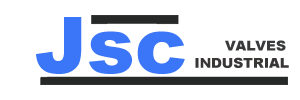Installation Considerations for Eccentric Butterfly Valves
On this page
Eccentric butterfly valves play a crucial role in industrial piping systems, and their proper installation is vital for ensuring safety and efficiency. Before installing an eccentric butterfly valve, it is important to consider the sealing direction and other relevant details to ensure smooth operation and effective sealing. Here are some key aspects to focus on during installation.
Choosing the correct sealing direction is critical for valve performance. Many users install valves based on the flow direction of the supply and return pipes, which can lead to poor sealing performance and affect maintenance and emergency response efficiency. To achieve optimal sealing, the valve body usually indicates the sealing direction.
In bi-directional sealing butterfly valves, arrows on the valve body indicate the primary sealing direction, pointing toward the drainage side. To ensure proper installation, both the supply and return valves should have their arrows pointing towards the maintenance side. This arrangement enhances sealing performance under pressure, reducing the risk of leaks.
In addition to ensuring the correct sealing direction, the installation position and method also significantly impact the valve's performance and lifespan. Proper installation stabilizes fluid flow and minimizes the risk of failure. Here are some specific recommendations.
Eccentric butterfly valves should be installed primarily on vertical pipes. Vertical installation facilitates smooth fluid flow and reduces the impact and pressure fluctuations on the valve. If horizontal installation is necessary, the valve shaft should remain horizontal, avoiding a vertical position. In special cases where horizontal installation is not possible, the shaft can be tilted, but the angle should not exceed 45 degrees to prevent the accumulation of solids and ensure proper operation.
When installing or welding the valve, ensure it is in a closed position. This prevents fluid leakage during welding and protects the internal structure from high temperatures generated by the welding process. The valve's drive mechanism should not be disassembled, as it is adjusted before leaving the factory. If disassembly is necessary, readjust the limits after reinstallation to ensure proper sealing and longevity.
Welding is a critical step in the installation of eccentric butterfly valves. Correct welding methods ensure the valve's safety and enhance its reliability over time. Follow these important guidelines during welding.
During electric welding, the grounding wire of the welding machine must be connected to the same side of the weld joint on the steel pipe. This step is crucial; if current passes through the valve body, it can burn the sealing surface, compromising sealing performance. Proper grounding helps prevent unexpected failures during welding.
For valves installed on vertical pipes, inject water at least 10mm high above the valve plate before welding to reduce the impact of high temperatures on the sealing surface. For horizontally installed valves, wrap a wet cloth around them to protect against heat and welding spatter.
Follow an appropriate welding sequence to avoid deformation or stress concentration caused by heat. Using suitable welding techniques, such as TIG or MIG welding, provides better quality and sealing performance. Maintain a moderate welding speed to ensure uniform and complete welds.
After welding, clean the weld seams to remove slag and oxides, ensuring a smooth and clean surface. Inspect the integrity of the weld seams to ensure there are no cracks or leaks, which is essential for the valve's long-term use.
After installation, thoroughly clean the valve to remove any debris to avoid blockages or leaks during use. Conduct two to three complete opening and closing tests to check if the valve operates normally. Pay special attention to sealing performance, ease of operation, and any unusual noises. If any issues are found, make adjustments or repairs promptly to prevent more severe problems.
In addition to installation precautions, regular maintenance is key to ensuring the long-term effective operation of eccentric butterfly valves. It is advisable to conduct comprehensive checks periodically, inspecting the sealing surfaces, valve body, and drive mechanism for wear, corrosion, or damage, and to replace or repair as necessary. Additionally, perform function tests regularly to ensure the valve operates correctly under various working conditions. If needed, use flow testing equipment to monitor the valve's flow characteristics to ensure compliance with design standards.
The installation direction and method of eccentric butterfly valves directly affect their sealing tightness and the safety of heating systems. To maximize investment benefits, it is essential to perfect the installation process and related measures, ensuring the correct installation direction and adherence to technical requirements. Through careful installation, thorough inspection, and regular maintenance, eccentric butterfly valves can effectively fulfill their roles in piping systems, ensuring smooth industrial operations. This not only enhances production efficiency but also significantly reduces economic losses and safety risks associated with equipment failures, ensuring the long-term reliability of the system.

